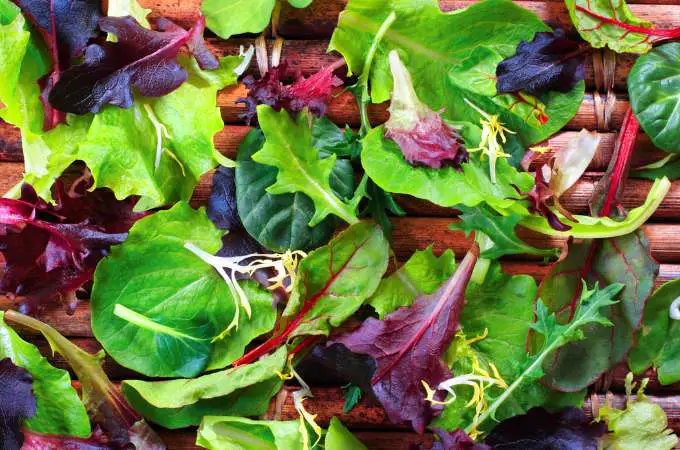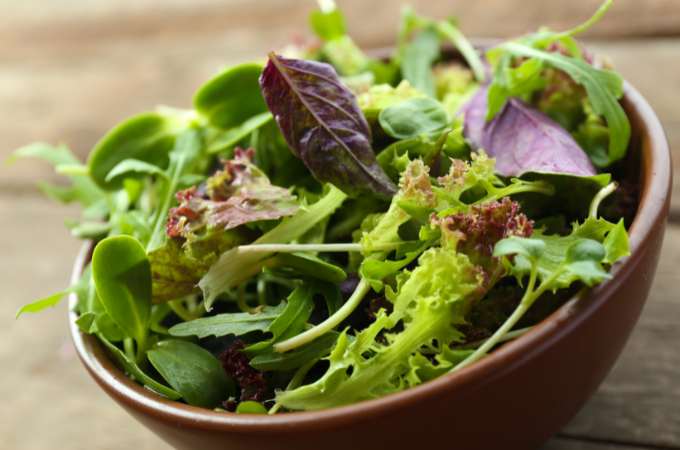
Chickens are known for their versatile diets, often enjoying a variety of foods ranging from grains to greens. A common question among poultry enthusiasts is, “Can chickens eat spring mix?” This article aims to provide a comprehensive answer, exploring the nutritional benefits, potential risks, and best practices for incorporating spring mix into a chicken’s diet.
Spring mix, typically a blend of young, tender leaves like spinach, arugula, and various types of lettuce, offers a range of nutrients beneficial to chickens. These greens are rich in vitamins A, C, and K, along with essential minerals like iron and calcium. Vitamin A supports eye health, while Vitamin C boosts the immune system. Calcium is crucial for strong eggshells, making spring mix an excellent supplement for laying hens.
Possible Risks and Considerations
While spring mix is generally safe for chickens, there are a few considerations. First, it should not replace their primary feed, as it doesn’t provide complete nutrition. Overconsumption can lead to nutritional imbalances. Additionally, certain greens in the mix, like spinach, contain oxalates that can interfere with calcium absorption if fed in large quantities. It’s important to ensure the mix is free from pesticides and other chemicals, as these can be harmful to chickens.
Moderation is key when feeding spring mix to chickens. It should constitute no more than 10% of their overall diet. A handful of spring mix per chicken, a few times a week, is a good guideline. This ensures they receive the benefits without risking nutritional imbalance.
Incorporating Spring Mix into a Chicken’s Diet
Introducing spring mix to chickens should be done gradually. Start with small amounts and observe their reaction. Chickens typically enjoy pecking at leafy greens, so scattering the mix in their enclosure encourages natural foraging behavior. Mixing it with their regular feed can also be an effective way to introduce this new food.
Leafy greens like those found in spring mix play a supplementary role in a chicken’s diet. They provide variety, enhance the nutritional profile, and encourage natural foraging behaviors. However, they should complement, not replace, a well-balanced poultry feed that meets all their nutritional needs.
You might also like: What Can Chickens Eat?

Exploring the Variety in Spring Mix: What’s Best for Your Chickens?
Spring mix isn’t just a single type of leafy green; it’s a medley of various greens, each with its unique nutritional profile. Lettuce varieties, often the base of these mixes, are low in calories but high in water content, making them a refreshing treat, especially in warmer weather. Arugula, another common component, is not only a taste delight for chickens but also a good source of calcium and potassium. The inclusion of spinach, rich in iron and vitamins, adds to the nutritional value, though its oxalate content warrants moderation.
Understanding the composition of your spring mix is crucial. Opt for organic varieties when possible to avoid the risks associated with pesticides. If you’re growing your own, ensure that the greens are harvested at a young stage, as this is when they’re most tender and palatable for chickens.
Health Benefits: Beyond Basic Nutrition
Feeding spring mix to chickens isn’t just about meeting their nutritional needs. These greens can play a role in promoting overall health and well-being. The antioxidants found in leafy greens, for instance, help combat oxidative stress, contributing to healthier, more robust chickens. The fiber in these greens aids in digestion, ensuring a healthy gut, which is essential for nutrient absorption and overall health.
Moreover, the act of foraging for greens like spring mix can be mentally stimulating for chickens. It encourages natural behaviors, keeping them active and engaged, which is beneficial for their mental health.
You might also like: Can Chickens Eat Rotten Food?
Seasonal Considerations and Availability

The availability of spring mix can vary with the seasons. In some regions, it’s readily available year-round, while in others, it might be a seasonal offering. This variability can be an opportunity to introduce your chickens to different types of greens throughout the year, ensuring a varied diet that caters to their changing nutritional needs.
During colder months, when fresh greens might be less available, consider growing some indoors or in a greenhouse. This not only ensures a steady supply but also can be a fun and rewarding activity.
Practical Tips for Feeding Spring Mix to Chickens
When introducing spring mix to your chickens, start with small quantities and gradually increase. Wash the greens thoroughly to remove any dirt or potential residues. You can hang bunches of greens in their coop or scatter them on the ground to encourage natural foraging behavior.
Observe your chickens after introducing spring mix. Look for signs of enjoyment and acceptance, and also be vigilant about any negative reactions, although these are rare with such natural foods.
Incorporating Spring Mix into Homemade Chicken Feed
For those who prefer making their chicken feed, spring mix can be a valuable ingredient. Blend it with grains, seeds, and other components to create a nutritious, balanced feed. This homemade approach allows you to control the quality and variety of ingredients, tailoring the diet to your chickens’ specific needs.
Final Thoughts
In conclusion, chickens can safely eat spring mix as part of a balanced diet. It provides essential vitamins and minerals, enhances the diversity of their diet, and supports overall health when given in moderation. As with any dietary change, it’s important to observe your chickens for any adverse reactions and adjust their diet accordingly.
Contents
- 1 Possible Risks and Considerations
- 2 Incorporating Spring Mix into a Chicken’s Diet
- 3 Exploring the Variety in Spring Mix: What’s Best for Your Chickens?
- 4 Health Benefits: Beyond Basic Nutrition
- 5 Seasonal Considerations and Availability
- 6 Practical Tips for Feeding Spring Mix to Chickens
- 7 Incorporating Spring Mix into Homemade Chicken Feed
- 8 Final Thoughts









